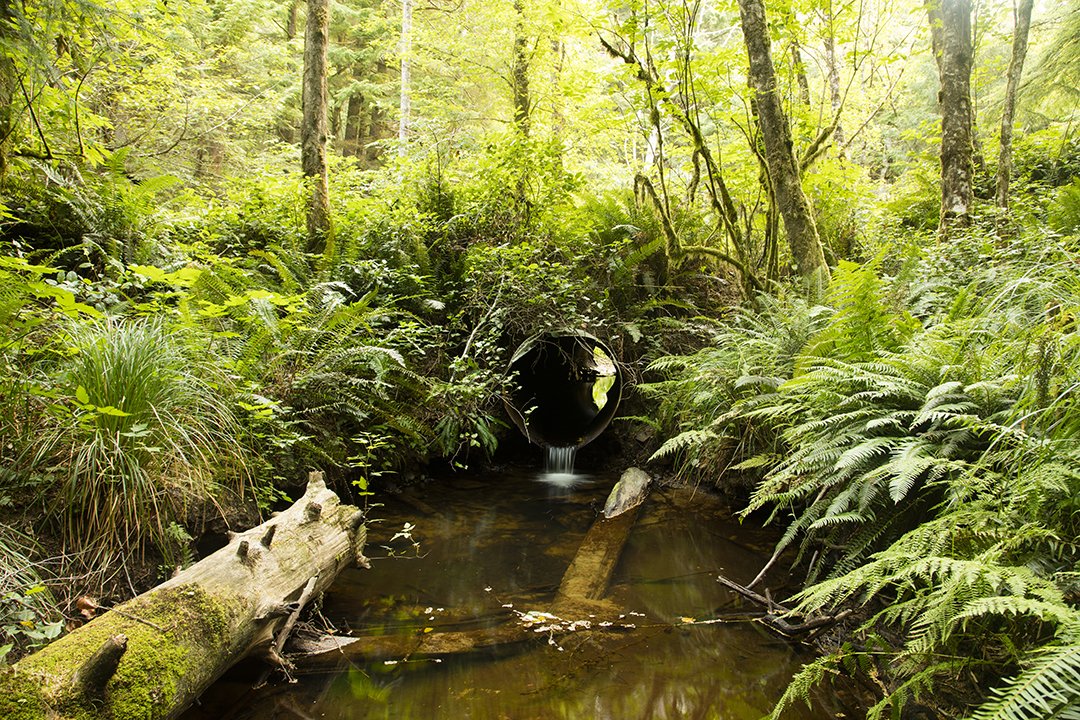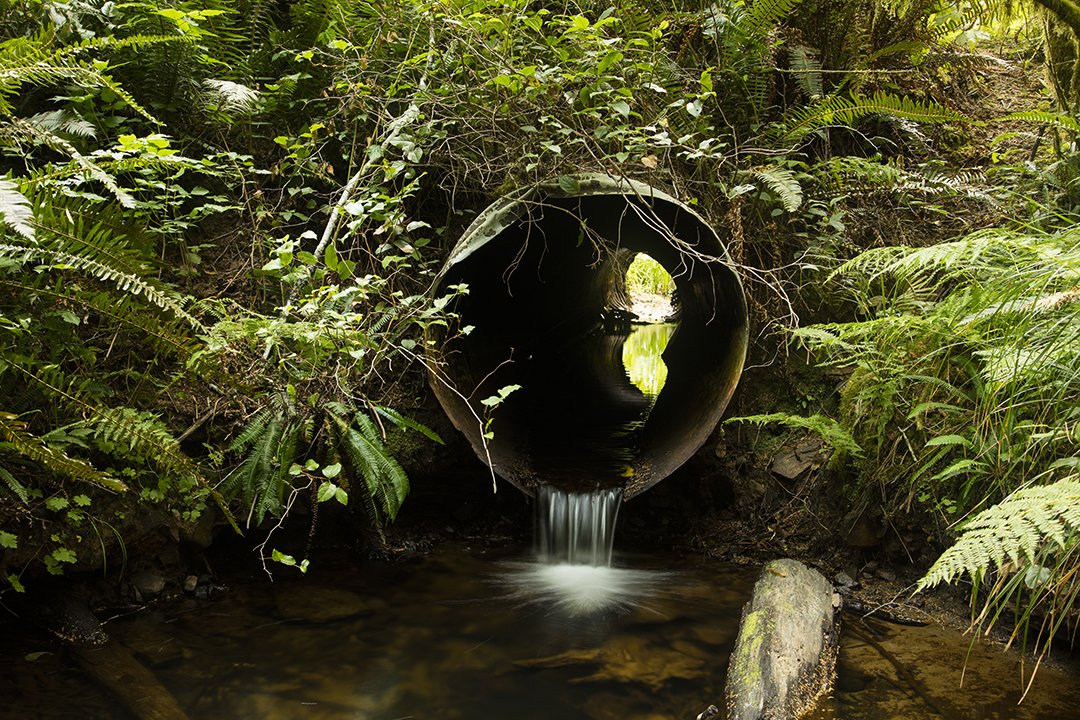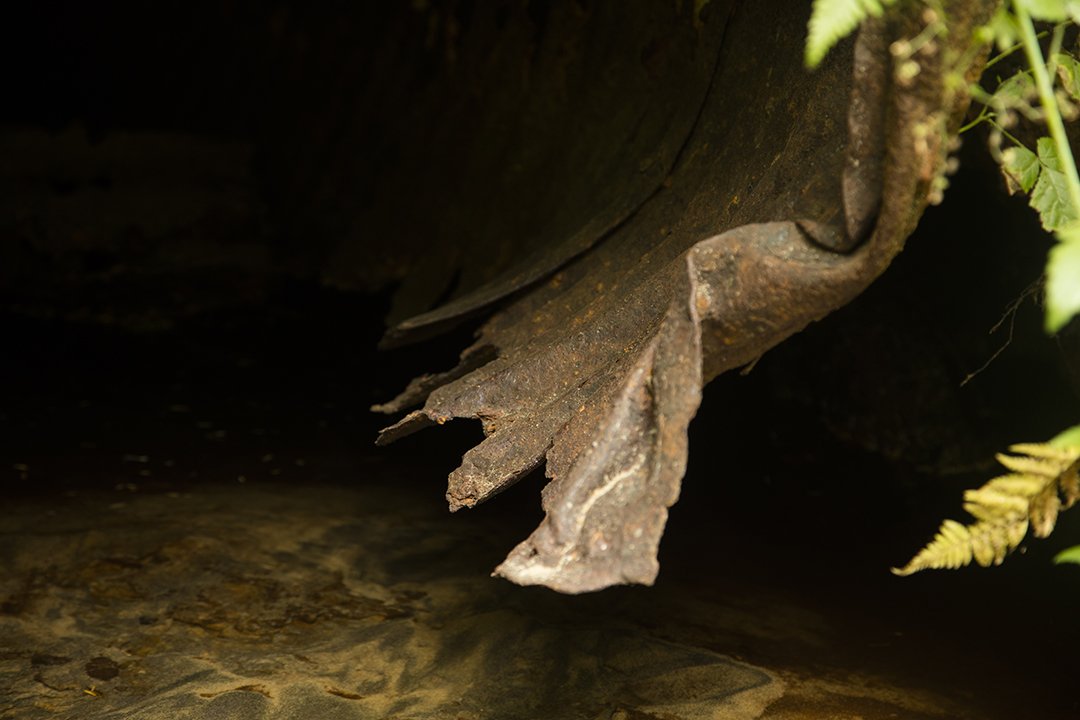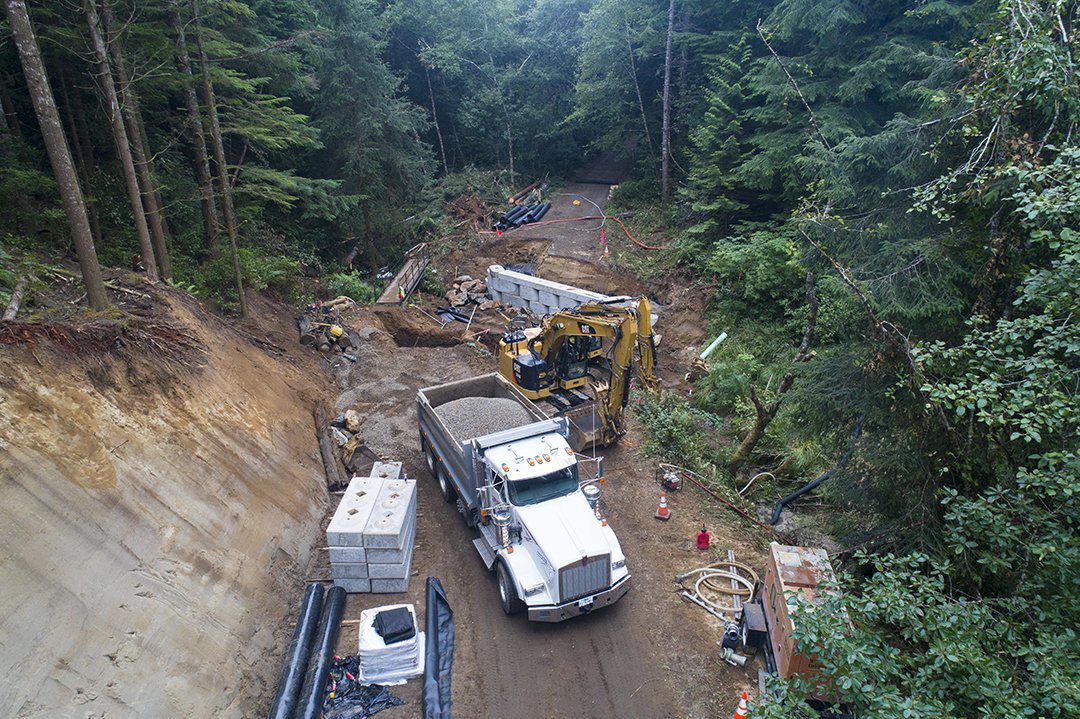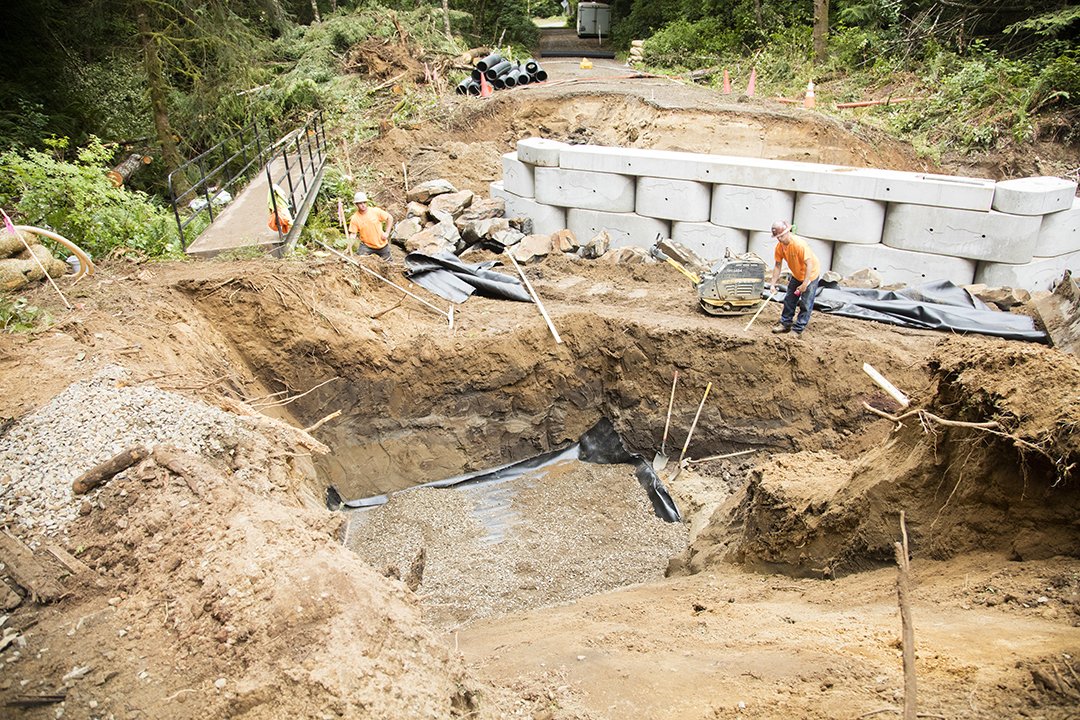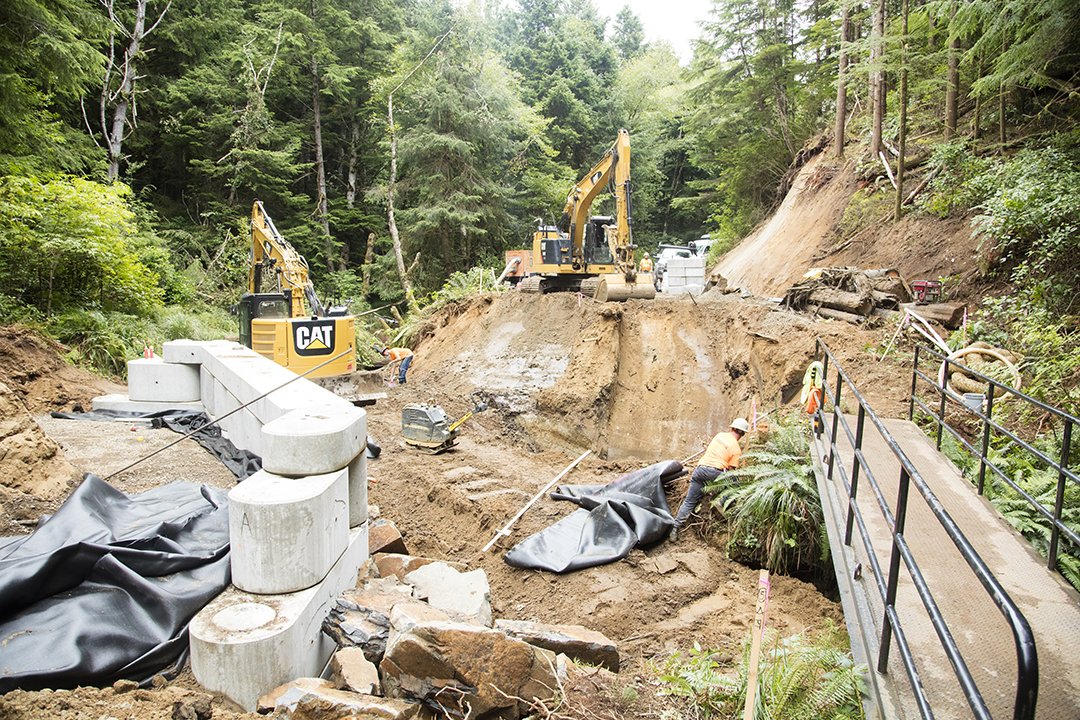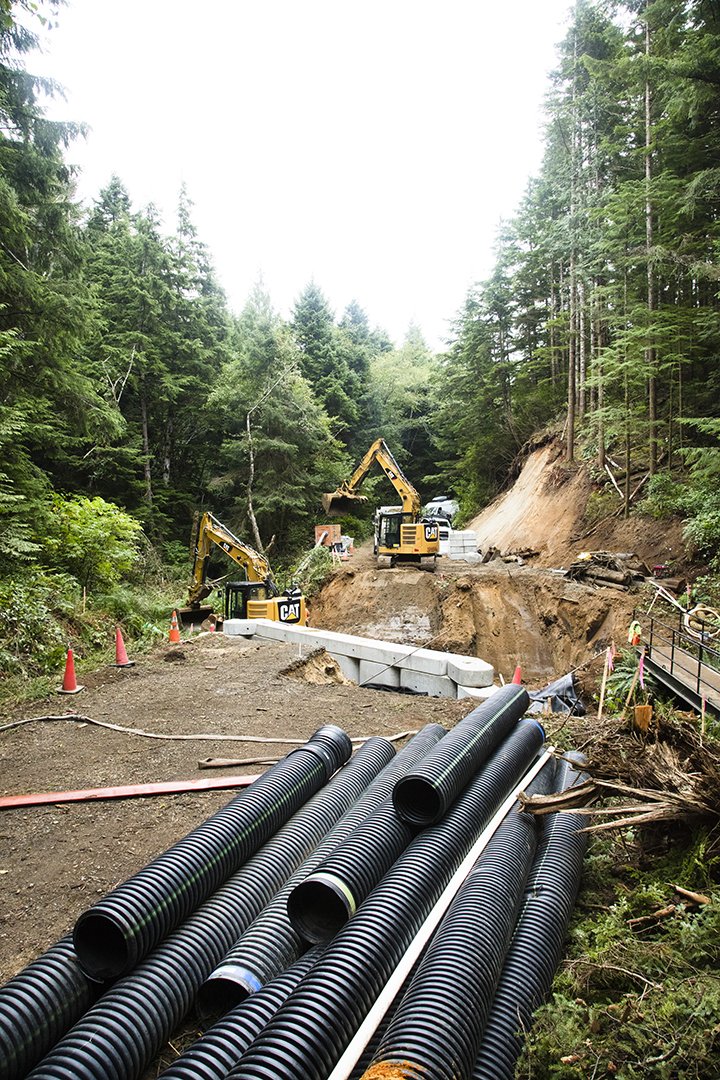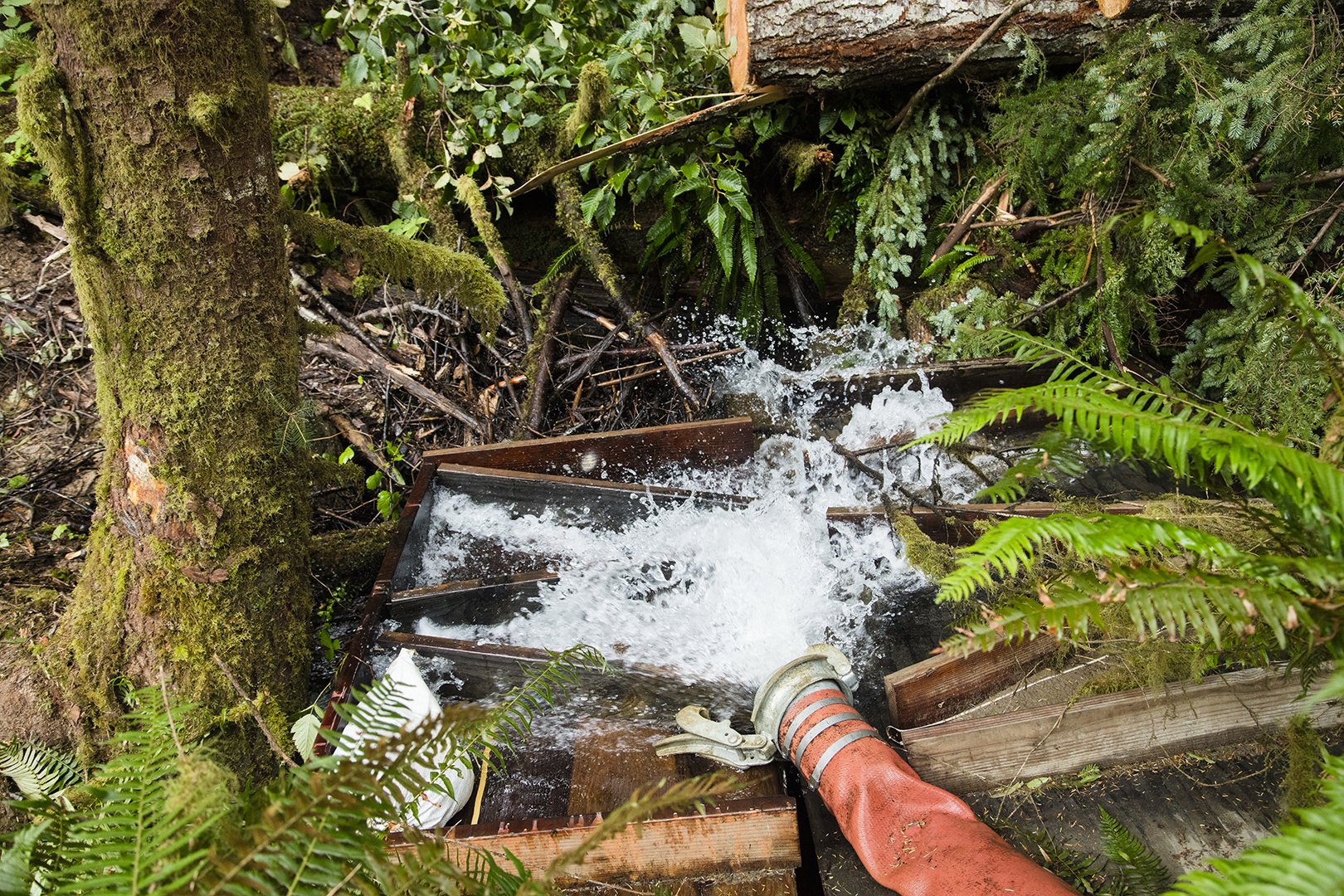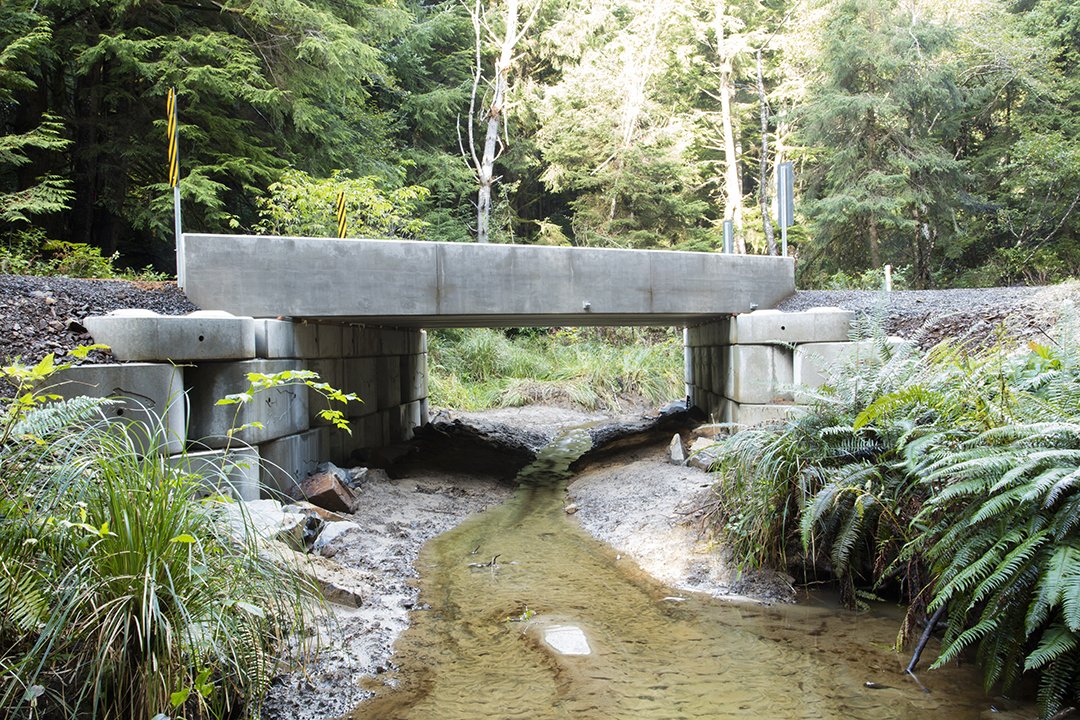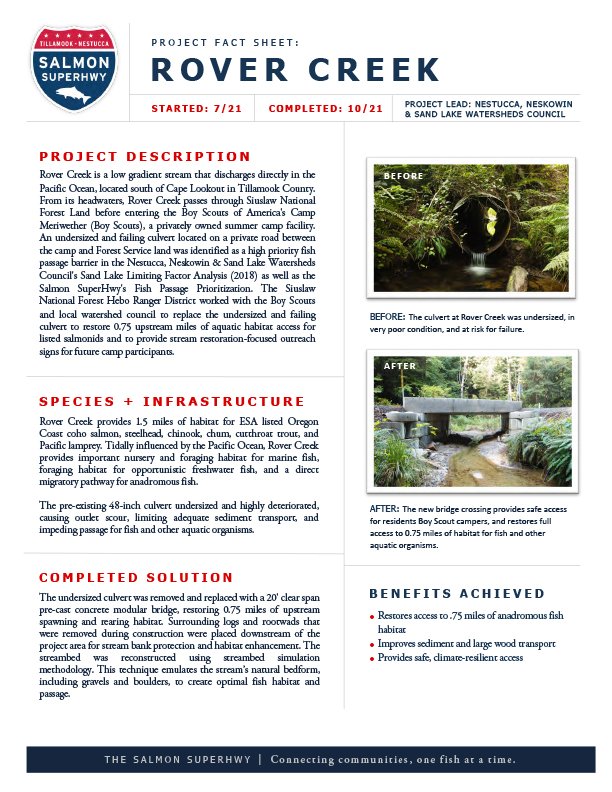Rover Creek highlights
The completed bridge over Rover Creek.
“In partnership with
local watershed councils, USFWS, USFS, TU and others, the program brings otherwise unavailable technical and administrative support to the County’s most critical challenges.
”
Project oVerview
Started: 7/21 Completed: 10/21
Rover Creek is a low gradient stream that discharges directly in the Pacific Ocean, located south of Cape Lookout in Tillamook County. From its headwaters, Rover Creek passes through Siuslaw National Forest Land before entering the Boy Scouts of America's Camp Meriwether (Boy Scouts), a privately owned summer camp facility. An undersized and failing culvert located on a private road between the camp and Forest Service land was identified as a high priority fish passage barrier in the Nestucca, Neskowin & Sand Lake Watersheds Council's Sand Lake Limiting Factor Analysis (2018) as well as the Salmon SuperHwy's Fish Passage Prioritization. The Siuslaw National Forest Hebo Ranger District worked with the Boy Scouts and local watershed council to replace the undersized and failing culvert to restore 0.75 upstream miles of aquatic habitat access for listed salmonids and to provide stream restoration-focused outreach signs for future camp participants.
Completed Solution
The undersized culvert was removed and replaced with a 20' clear span pre-cast concrete modular bridge, restoring 0.75 miles of upstream spawning and rearing habitat. Surrounding logs and rootwads that were removed during construction were placed downstream of the project area for stream bank protection and habitat enhancement. The streambed was reconstructed using streambed simulation methodology. This technique emulates the stream’s natural bedform, including gravels and boulders, to create optimal fish habitat and passage.
Highly successful Partnership
The success of the project was largely due to the collaborative nature of Salmon SuperHwy — partners involved included federal, state and county agencies, in addition to non-profits and watershed councils. Each of these entities brought a unique perspective and value to the project.
The Siuslaw National Forest conducted initial stream and site surveys, streambed simulation designs, bridge designs, federal permitting, technical assistance during project implementation, as well as funding contributions. The Nestucca, Neskowin & Sand Lake Watersheds Council provided project management and state and local permitting. The US Fish and Wildlife Service provided technical assistance, design review, and funding contributions. Trout Unlimited provided in-kind oversight and project support. The Oregon Department of Fish and Wildlife provided fish salvage permits and assistance. The Oregon Watershed Enhancement Board provided funding contributions. The Boy Scouts of America Cascade Pacific Council provided in-kind contributions through the use of equipment and labor.
Benefits
Restores access to .75 miles of anadromous fish habitat
Improves sediment and large wood transport
Provides safe, climate-resilient access
Species + Infrastructure
Rover Creek provides 1.5 miles of habitat for ESA listed Oregon Coast coho salmon, steelhead, chinook, chum, cutthroat trout, and Pacific lamprey. Tidally influenced by the Pacific Ocean, Rover Creek provides important nursery and foraging habitat for marine fish, foraging habitat for opportunistic freshwater fish, and a direct migratory pathway for anadromous fish.
The pre-existing 48-inch culvert undersized and highly deteriorated, causing outlet scour, limiting adequate sediment transport, and impeding passage for fish and other aquatic organisms.
Partners
US Forest Service, US Fish and Wildlife Service, Nestucca Neskowin & Sand Lake Watersheds Council, Oregon Watershed Enhancement Board, Oregon Dept. of Fish and Wildlife, Trout Unlimited, Boy Scouts of America
cost + funding
TOTAL PROJECT COST: $ 225,000 + $41,000 in kind
USFS: $190,000 + $40K in kind engineering and oversight
OWEB: $15,000
USFWS: $20,000
TU: $1,000 in kind
